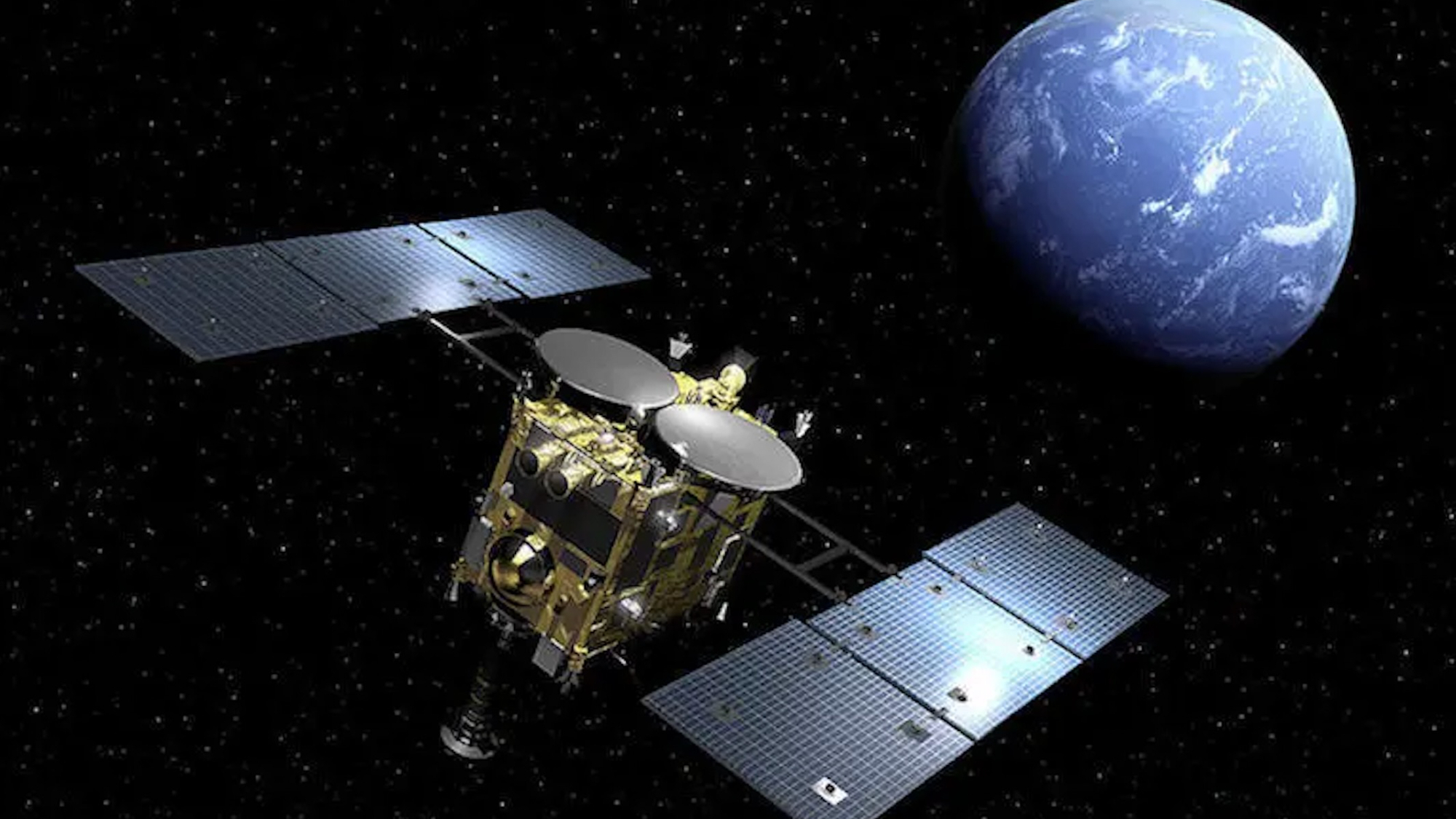
Japan's Hayabusa2 spacecraft is targeting a small near-Earth asteroid as part of its extended mission — and you could help name the space rock.
The asteroid, designated 2001 CC21, or 98943, is roughly 2,300 feet (700 meters) wide. The Hayabusa2 probe will fly by the asteroid at high speed in July 2026, if all goes according to plan. However, before the spacecraft greets our cosmic neighbor, it needs a better name.
That’s why the Japanese space agency, JAXA, is looking for help from the public to give the asteroid an official name. You can submit your name suggestions online through May 9. Only one submission will be considered per applicant.
Related: Asteroid arrival! Japanese probe reaches 'spinning top' space rock Ryugu
Submissions must follow the International Astronomical Union’s guidelines, meaning the asteroid’s name must be non-offensive, preferably one word and 16 alphabetical characters or less. The full list of rules for naming asteroids can be found online, in a statement from JAXA.
Of the names submitted, those with the highest number of suggestions will be given priority. Then, elementary and junior high school students nominated by the YAC (Japan Space Youth Association) and KU-MA (Children, Space, Future Association, a nonprofit) will be asked to help in choosing the final name from the short list of ideas.
"We plan to choose a name by the summer of 2024, and submit the proposal to the International Astronomical Union [in] collaboration with the US LINEAR (Lincoln Near-Earth Asteroid Research) team, who discovered 2001 CC21," JAXA officials said in the statement. "Those who select the final name choice will receive a commemorative gift from the Hayabusa2 Extended Mission team."
Discovered on Feb. 3, 2001, the unnamed asteroid orbits the sun every 383 Earth days. Observations suggest 2001 CC21 is elongated, similar to the asteroid Itokawa, rather than roughly spherical in shape like Ryugu, which Hayabusa2 collected samples from in 2019. These samples came down to Earth in 2020.
Near-Earth objects have orbits that bring them to within 120 million miles (195 million kilometers) of the sun, meaning they can pass through Earth's orbital neighborhood. The distance between Earth and the sun is measured in astronomical units (AU); 1 AU is equal to about 93 million miles (150 million km). Asteroid 2001 CC21 travels between 0.81 AU and 1.26 AU from the sun on its trajectory through space. While the asteroid has an Earth-crossing orbit, it is not considered a threat to our planet.
During its flyby in 2026, Hayabusa2 will pass the asteroid at a speed of 5 km/s (18,000 kph, or 11,200 mph). The spacecraft will travel as close as possible to capture high-resolution observations of the asteroid, while maintaining its altitude to avoid a collision, according to the JAXA statement.







